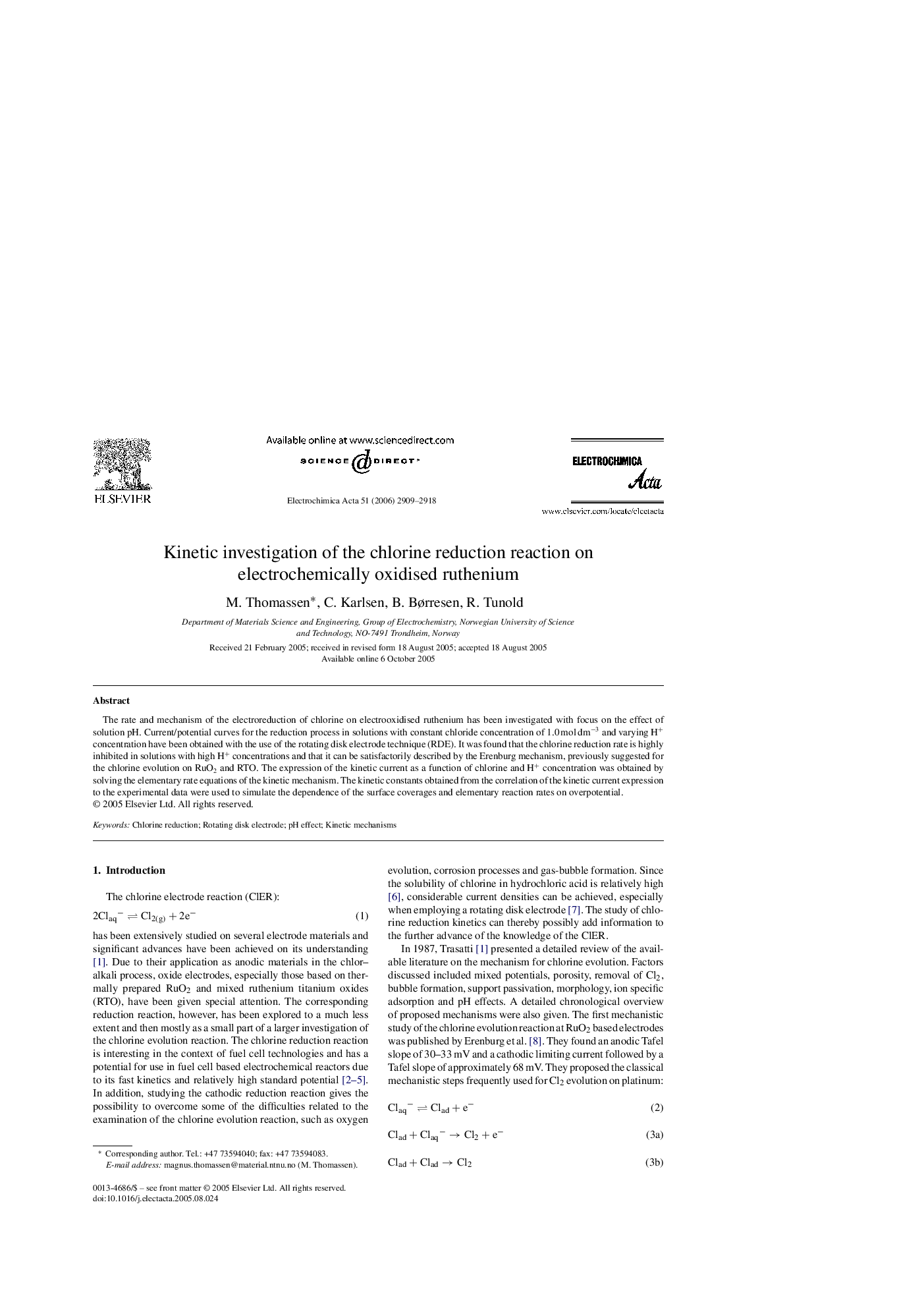| Article ID | Journal | Published Year | Pages | File Type |
|---|---|---|---|---|
| 196628 | Electrochimica Acta | 2006 | 10 Pages |
The rate and mechanism of the electroreduction of chlorine on electrooxidised ruthenium has been investigated with focus on the effect of solution pH. Current/potential curves for the reduction process in solutions with constant chloride concentration of 1.0 mol dm−3 and varying H+ concentration have been obtained with the use of the rotating disk electrode technique (RDE). It was found that the chlorine reduction rate is highly inhibited in solutions with high H+ concentrations and that it can be satisfactorily described by the Erenburg mechanism, previously suggested for the chlorine evolution on RuO2 and RTO. The expression of the kinetic current as a function of chlorine and H+ concentration was obtained by solving the elementary rate equations of the kinetic mechanism. The kinetic constants obtained from the correlation of the kinetic current expression to the experimental data were used to simulate the dependence of the surface coverages and elementary reaction rates on overpotential.
